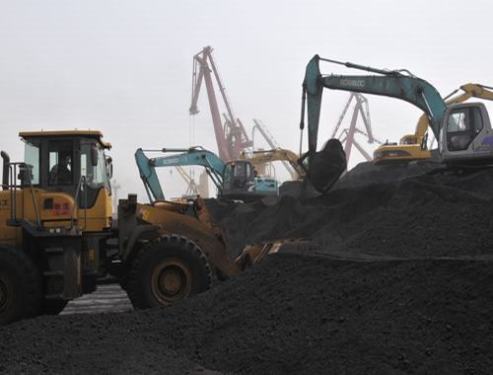 In September, raw coal production was negative again. Due to the sluggish demand in the downstream, the low price of coal has caused small and medium-sized coal enterprises to cut production or even stop production due to pressures from cost and inventory. Following the negative growth in output in August, the output of raw coal and coke in the country again showed a negative growth year-on-year in September. According to statistics, the total output of raw coal in September was 319 million tons, which was a year-on-year decrease of 3.5% and a decrease of 1.0%. According to the current preliminary statistical data, the cumulative value of raw coal output from January to September this year reached 2.84 billion tons, an increase of only 2.2% year-on-year, and the growth rate fell by nearly 10 percentage points.
In September, raw coal production was negative again. Due to the sluggish demand in the downstream, the low price of coal has caused small and medium-sized coal enterprises to cut production or even stop production due to pressures from cost and inventory. Following the negative growth in output in August, the output of raw coal and coke in the country again showed a negative growth year-on-year in September. According to statistics, the total output of raw coal in September was 319 million tons, which was a year-on-year decrease of 3.5% and a decrease of 1.0%. According to the current preliminary statistical data, the cumulative value of raw coal output from January to September this year reached 2.84 billion tons, an increase of only 2.2% year-on-year, and the growth rate fell by nearly 10 percentage points. The spread of thermal coal at home and abroad will expand, and the import volume may recover in the future. In September, China's coal imports (including brown coal) fell by 8.9% to 18.63 million tons. The recent international coal prices continue to decline. The latest data show that Australia's BJ coal prices have dropped to a new low of US$80.98/ton during the year. On the contrary, China’s coal prices in ports have maintained a steady upward trend in the near future. We have tracked the 5,500 kcal thermal coal price of Qinhuangdao coal and Australia's BJ coal price spread widened to RMB 140/t. Although the regained advantage of imported coal prices may stimulate the rapid recovery of coal imports in the fourth quarter, the following two factors will restrict the growth of coal imports: 1) Downstream power plants are under pressure to destock, and their purchase intention is not Strong; 2) In the previous period, the sharp fall in domestic coal prices led to losses for import traders, and import traders would be more cautious in determining domestic coal price changes and the amount of imported coal purchased.
Maintain industry "synchronous" rating. At present, the domestic coal industry is in a pattern of basic balance between supply and demand, and coal prices have steadily increased. As the weather turns cooler and the state regulates the macro economy, the downstream demand for coal in the fourth quarter is expected to warm up. However, under the dual pressure of low international coal prices and accumulated downstream stocks, it is expected that domestic coal prices will remain low in the future.
Anodizing treatment is a surface finishing process for aluminum that forms a protective oxide layer on the surface of the metal. The process involves immersing the aluminum material in an electrolytic solution and passing an electric current through it. This creates a uniform and durable oxide coating that enhances the corrosion resistance and aesthetic appeal of the metal.
There are two main types of anodizing treatment: sulfuric acid anodizing and hard anodizing. Sulfuric acid anodizing is the most common type and produces a thinner, more decorative layer of oxide coating, while hard anodizing results in a thicker, harder, and corrosion-resistant layer that is ideal for industrial and automotive applications.
Anodizing treatment provides numerous benefits to aluminum products. It increases their resistance to corrosion and wear and tear, making them suitable for use in harsh environmental conditions. The process also enhances the strength and durability of the metal, extending its lifespan and reducing the need for maintenance.
Another advantage of anodizing treatment is its ability to add color and texture to aluminum products. Different dyes can be added to the electrolyte solution to produce a range of colors, from bright and vibrant to more subdued tones. Additionally, different textures and finishes can be achieved through specialized anodizing processes, such as matte anodizing or brushed anodizing.
Anodizing treatment is commonly used in various industries, including aerospace, automotive, construction, and consumer goods. It is an eco-friendly process as it uses no hazardous materials and produces minimal waste. However, it is important to note that anodizing treatment may affect the dimensional accuracy of the product and may mask defects that are present on the surface of the material.
Overall, anodizing treatment provides an effective way to enhance the functionality and appearance of aluminum products. As research and innovation continue to advance, even more advanced and innovative applications of anodized aluminum are expected to emerge.
Anodic Treatment,Anodizing Surface Treatment,Surface Treatment Anodizing,Boric Acid Anodizing
Lizhi Precision Manufacturing Technology Co.,Ltd , https://www.autoindust.com